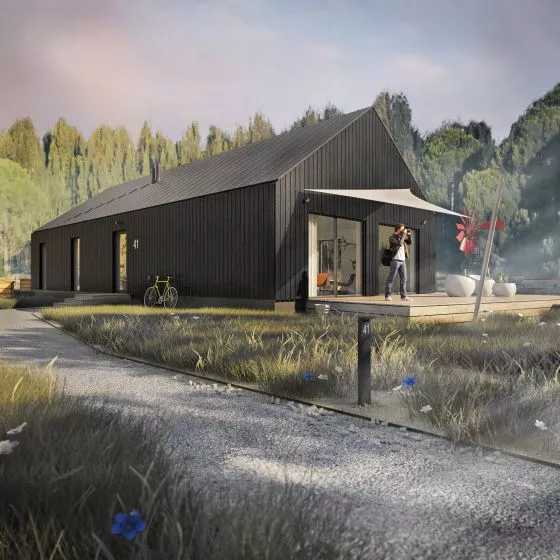An exhibition of sculptures by Monika Sosnowska will run until October 25 in Warsaw's Zachęta Gallery. She is one of the few Polish artists who is interested in architecture.
Along with the National Museum, the Zachęta-National Art Gallery is the second cultural institution in Warsaw to boast a truly monumental headquarters. Dating back to the turn of the 19th century, the building of the Society for the Encouragement of Fine Arts, designed by Stefan Szyller, bears all the hallmarks of a representative building in the historicist style. Although it has long served for the presentation of modern art and has been the site of many an artistic experiment, it rarely becomes the backdrop for activities that deconstruct the heritage of modern architecture. And this is probably how one can describe the work of Monika Sosnowska, whose works can be seen in Zachęta until October 25 this year.
"Handrail", 2006, exhibition "End of an exotic journey" at the Foksal Gallery Foundation
Photo: Aneta Grzeszykowska, Jan Smaga, © Monika Sosnowska, Foksal Gallery Foundation
Climbing Zachęta's marble staircase, wandering towards the crowning statue of "Gladiator" chiseled by Pius Weloński, an attentive viewer will notice a strip of red PVC that winds around the gallery's ornate balustrade. This is the 2016-2020 work by Monika Sosnowska titled "Handrail," which imitates the distinctive plastic cladding, slightly older Poles know very well from the stairwells of blocks of flats, schools, public buildings, commonly used in the 1960s. Slightly younger people also still have the opportunity to see such finished staircase railings in buildings that have so far escaped renovation and modernization. It is this red railing winding along the wall that leads the viewer deep into the gallery, where a collection of the artist's works created in the last decade is presented in seven rooms. It is worth mentioning that this is the first such large monographic presentation of Monika Sosnowska's works in Poland, prepared especially for Zachęta. The curator Maria Brewinska selected works from the sculptor's oeuvre, representing successive stages in the evolution of the artist's oeuvre, who knows whether she is not better known and appreciated abroad than in Poland.
The practical, functional, albeit somewhat coarse (and undoubtedly sentimental) red PVC cladding from the communist era, wrapped around the massive, ornate marble staircase balustrade, may appear as a symbolic clash of Polish aspirations with reality. After all, for generations we've all dreamed of living in palaces, of having our cities filled with ornate architecture in historic styles, and our apartments decorated with stylish trinkets and antiques. Meanwhile, most of us live in modernist blocks of flats, work in styleless, unified office buildings, and buy furniture at Ikea.
"Marketplace," 2013, painted steel, exhibition view, Zachęta - National Gallery of Art, Warsaw, 2020.
Photo: Piotr Bekas © Zachęta archives















































